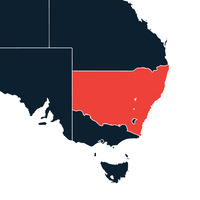
Bike Carrier Regulations - New South Wales
Buying a bike rack? Learn more about the rules and regulations in NSW so you can stay out of trouble.
Read MoreFind your vehicle:
Bicycles appear to be the hot ticket item for the 2021 Christmas period. Considering the times, a lot of people have health on their mind, and what better way to kick start the new year than with a brand new bicycle?
But with a new bicycle comes a new challenge; getting to the track. Some of us have the luxury of being able to leave our door and hit the trail, but for many others, this is simply not an option. That’s where bike carriers come into play.
Now you can’t just throw your bike on your roof, strap it down, and call it a day. There are laws and regulations that you must follow that change state to state. Tracking down the right information can be surprisingly tricky, but thankfully we’ve scoured the rule books to collate everything in a single place.
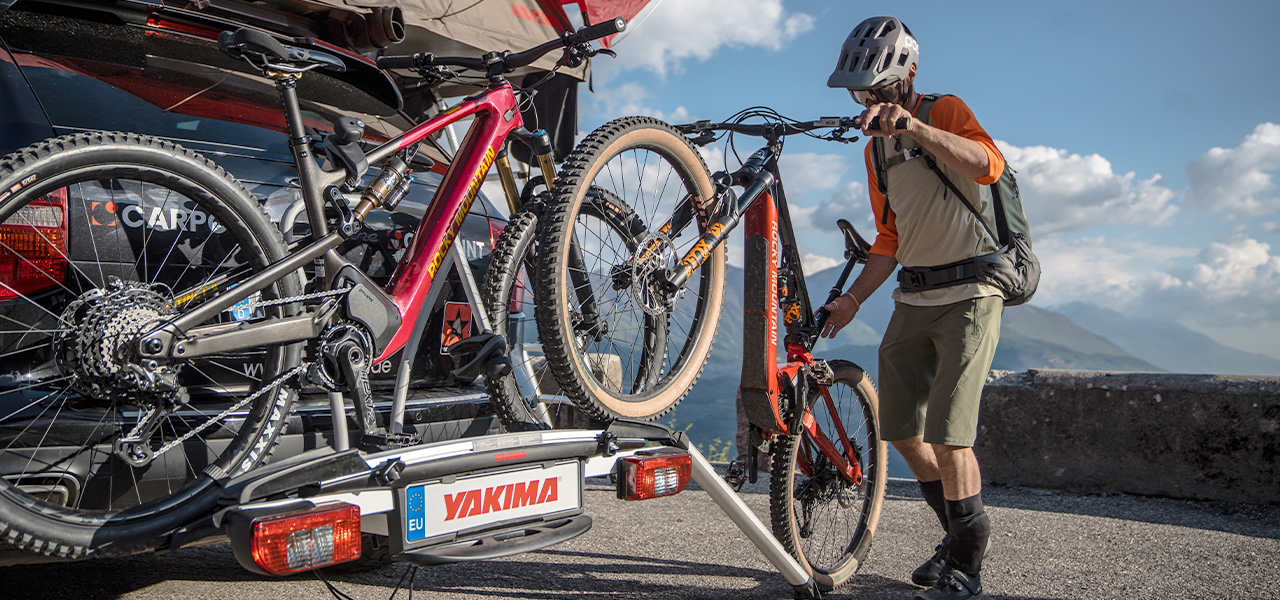
Remember that it is your responsibility to ensure that you’re using your vehicle and it’s accessories safely and to the requirements of the law. Any object fitted to a vehicle should be designed, built and fitted to your vehicle in a way that minimises the likelihood of injury to a person making contact with the vehicle.
This is information that we found as of the 6th of January, 2022 that can change without notice. This is intended as a rough guide only. It is your responsibility to ensure that all information provided is suitable for your use case.


Connecting a bike to your roof

Victoria has very specific rules regarding bike carriers compared to other states. Most are around safety when the vehicle is both static and in-motion but some are not entirely obvious so it’s important to ensure that you’re following all the rules.
If permanently affixed then a bicycle carrier is considered to be part of the vehicle. When it is not then the bicycle carrier is considered a load. Any load, including the carrier, as well as any bicycles or other equipment attached to the carrier must not project more than 150mm from the outermost part of either side of the vehicle.
The following general rules apply for all bike carriers:
In addition to these guidelines, any vehicle, including a bicycle carrier and it’s load, must comply with the general dimension limits set out by VicRoads which is:
Bicycle carriers should not project more than 1.2m beyond the rear of the vehicle. If it is not possible to stay within 1.2m, a warning signal must be carried on the outermost part of the bicycle.
A warning signal must be:
Number Plates
The rear number plate on a vehicle must be clearly visible from a distance of 20m from the number plate at any point within a 90-degree horizontal arc and a vertical arc of 45 degrees as shown in the diagram below.

If a vehicle is fitted with a rear-mounted bicycle carrier and the number plate is not clearly visible in accordance with the above requirements, you may do one of the following:
When using the bicycle carrier at night, the number plate must have sufficient lighting to ensure it remains visible in accordance with the above requirements
Lighting
The bicycle carrier or any bicycles must not obstruct or affect the performance or visibility of any tail lights, parking lights, indicators or brake lights. If any of the lights are obscured, you will need to reposition the obstruction or fit portable rear lights. Portable rear lights must have a pair of red lights visible for 200m behind the rear of the vehicle.
When driving at night, or in hazardous weather conditions causing reduced visibility, the vehicle’s lights must be on and clearly visible. It is a requirement that a vehicle’s tail lights are visible for a distance of 200m behind the vehicle when in use, while indicator lights must be visible from 30 metres.
If you intend to use a rear-mounted bicycle carrier at night, you must ensure that the rear lights (tail and indicator) and number plate remain clearly visible. Portable rear lights must be fitted if any of the lights are obscured.
Removing the carrier when not in use
It is advisable to remove rear-mounted bicycle carriers from the rear of the vehicle as soon as it is practical to do so after use.
Queensland is the most difficult to find clear regulations for as there is no public guideline available for individuals to follow regarding bike carriers but they do have rules regarding how to transport loads.
When you transport any kind of load, your vehicle or trailer must be loaded safely so it doesn’t endanger other road users, you or your passengers, or damage road infrastructure.
This means ensuring that your load:
If you’re in control of a light vehicle, you’re responsible for ensuring your load doesn’t make your vehicle unstable or unsafe, and can’t fall or be dislodged from the vehicle.
To keep your load safe, you must:
Each character (letters and numbers) of a number plate must be clearly visible when the vehicle is used on the road. If you attach a bike rack or mobility device rack to the rear of your vehicle and it or the load obstructs any character on the number plate from being read, you will need to purchase and affix an auxiliary plate.
Your auxiliary plate will display the same characters as the number plate issued for the vehicle.
Similarly, you should make sure that your lights are not obstructed which may require the purchase of portable rear lights.
The ACT has very limited information regarding bike carriers and their respective laws. However they do specify, as with all other states, that the number plate can NOT be obstructed.
Similarly, you should make sure that your lights are not obstructed which may require the purchase of portable rear lights.
Important! If you enter NSW from the ACT then you must follow the rules and laws of NSW.
If you have a bicycle rack attached to the back of your car, you may need a bicycle rack number plate.
A bicycle rack attached to a motor vehicle, and any bicycle on the rack, must not obscure the rear number plate of the vehicle. When attaching a bicycle rack to the rear of a vehicle, you can either:
You must not display a standard number plate on both the rear of a motor vehicle and on a bicycle rack, or display home-made number plates.
Bicycle rack number plates have the same registration number as your motor vehicle and so cannot be used on any other vehicle.
When you are carrying bicycles on your rack, if the brake lights on the motor vehicle are not visible from a distance of 200 metres under normal weather conditions, you must attach an additional brake light to the rack, which is visible from 200 metres.
You can order a plate here - EzyPlates
Northern Territory has fairly simple rules to follow but is strict on its requirements.
You must do all of the following:
You must make sure the bicycle rack and its load does not do any of the following:
If the bike rack blocks the view of the number plate you can re-locate the number plate, or place an additional number plate onto the bicycle rack. You will have to pay a fee for the extra number plate, and it must be identical to the number plate on the vehicle.
You should also remove the bike rack from your vehicle when not using it to carry bikes.
Make sure you can see the rear of the vehicle.
There are additional requirements to the above for rear-mounted load-carrying devices.
Make sure the load-carrying device and its load does not:
Tasmania has very similar rules to Victoria. Here is the necessary information:
On top of that:
Any part of the bicycle carrier, including any bicycles which may be loaded onto it, must be fitted in a way so as to not be a dangerous protrusion to a person or property. The following general rules apply:
Any dangerous or sharp protrusions must be removed or covered.
The rear number plate on the vehicle must be clearly visible from a distance of 20m within any point 45 degrees to the left, right or above the number plate as shown in the diagrams below

If a vehicle is fitted with a rear-mounted bicycle carrier and the number plate is not clearly visible in accordance with the above requirements, depending on the type of bicycle rack and obstruction you may do one of the following:
Regardless of the style of number plate affixed, when using a bicycle carrier at night, the number plate must have sufficient lighting to ensure it remains visible in accordance with the above requirements. Hand painted or replica number plates are not permitted.
The bicycle carrier and/or bicycles must not obstruct or affect the performance or visibility of any of the vehicles rear lights. If any of the lights are obscured, you will need to reposition the obstruction or fit portable rear lights. When driving at night, or in hazardous weather conditions causing reduced visibility, the vehicle’s lights must be on and clearly visible.
It is a requirement that a vehicle’s tail lights are visible for a distance of 200m behind the vehicle when in use, while indicator lights must be visible from 30 metres. When required, portable rear lights must be fitted in pairs if any of the lights are obscured and not visible over the required distance.
Even though your license and car may be registered in one state, when you travel to another then you must abide by the laws of the state you are travelling through. Not knowing the rules won’t fly with local authorities
Related items:
Rhino-Rack Number Plate Holder
Sources:
https://www.transport.tas.gov.au/

Buying a bike rack? Learn more about the rules and regulations in NSW so you can stay out of trouble.
Read More
Buying a bike rack? Learn more about the rules and regulations in Victoria so you can stay out of trouble.
Read More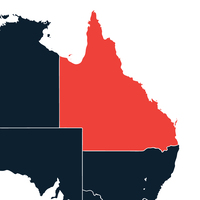
Buying a bike rack? Learn more about the rules and regulations in Queensland so you can stay out of trouble.
Read More
Buying a bike rack? Learn more about the rules and regulations in Western Australia so you can stay out of trouble.
Read More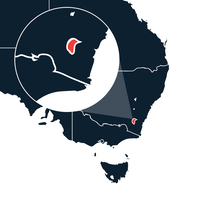
Buying a bike rack? Learn more about the rules and regulations in the ACT so you can stay out of trouble.
Read More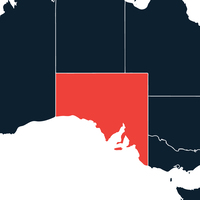
Buying a bike rack? Learn more about the rules and regulations in South Australia so you can stay out of trouble.
Read More
Buying a bike rack? Learn more about the rules and regulations in the Northern Territory so you can stay out of trouble.
Read More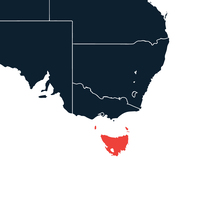
Buying a bike rack? Learn more about the rules and regulations in Tasmania so you can stay out of trouble.
Read More